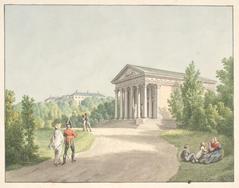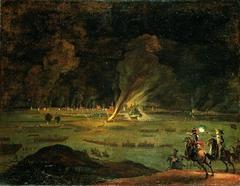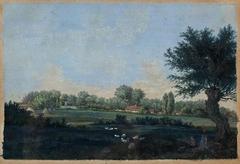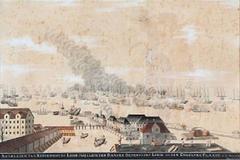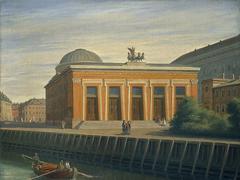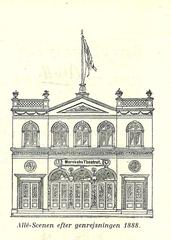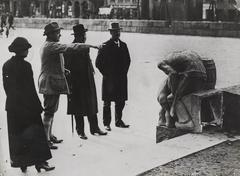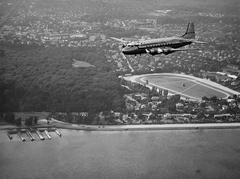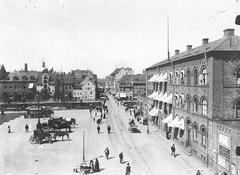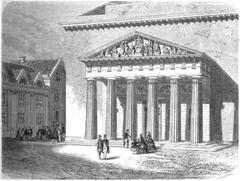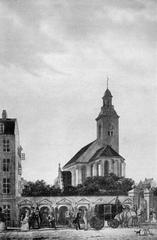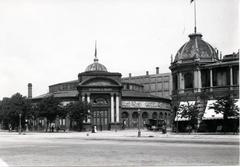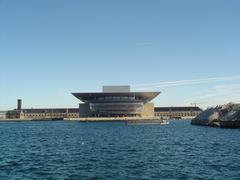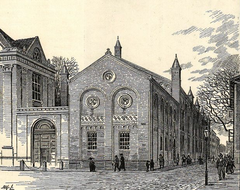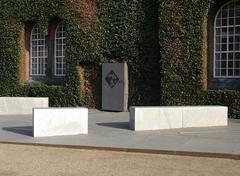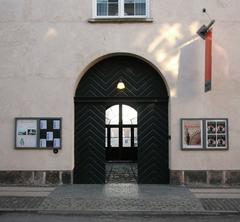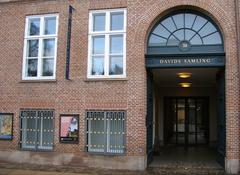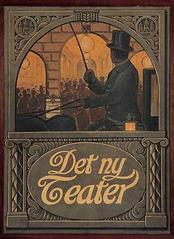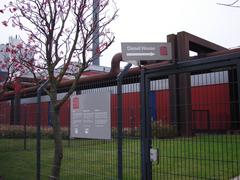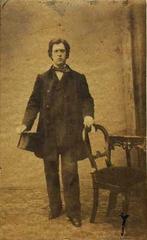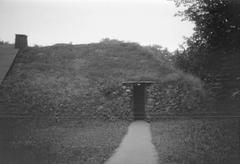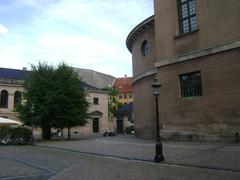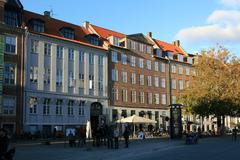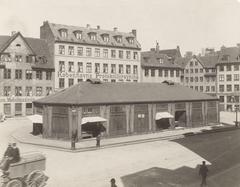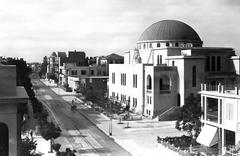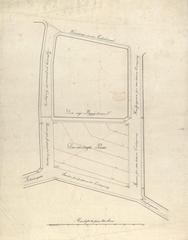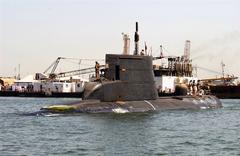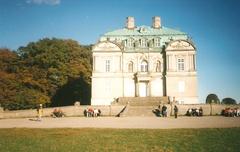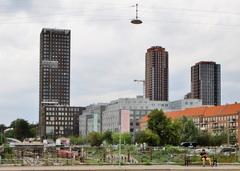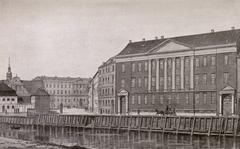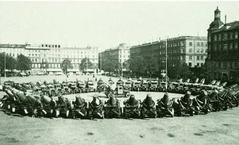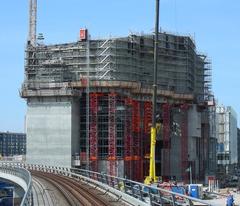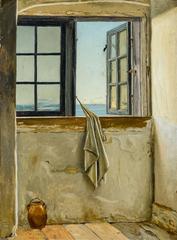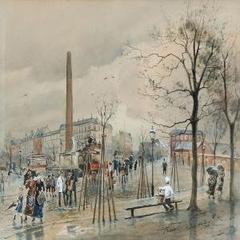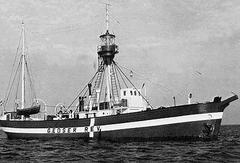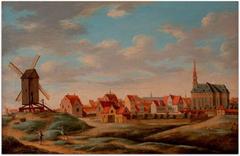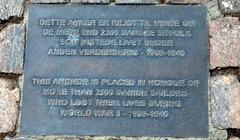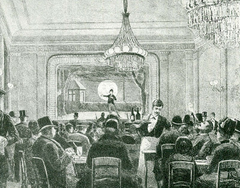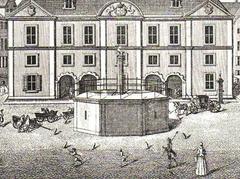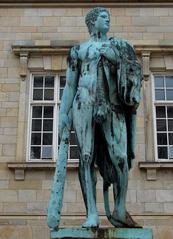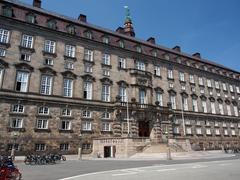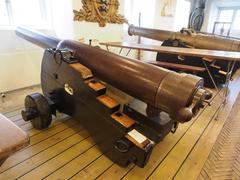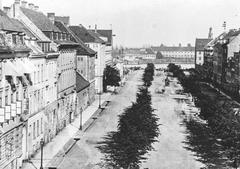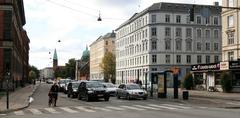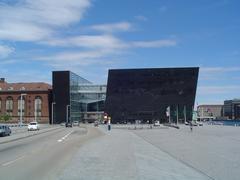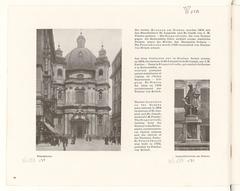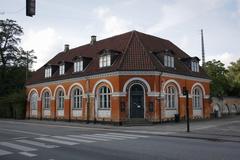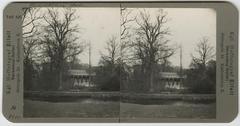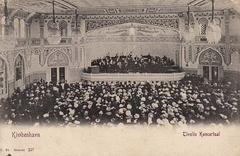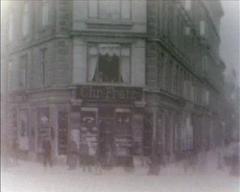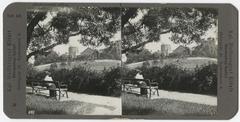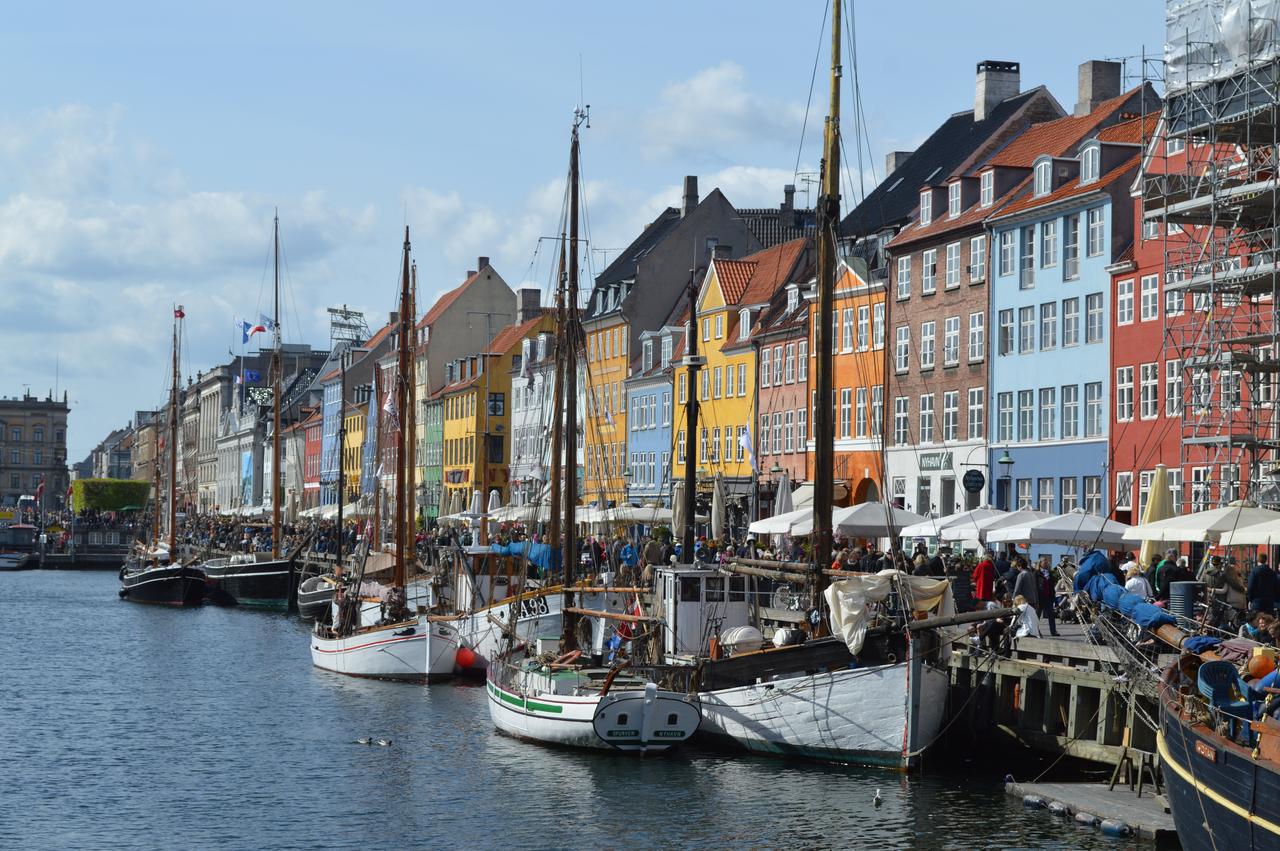
Comprehensive Guide to Visiting Copenhagen, Capital Region of Denmark, Kingdom of Denmark
Date: 13/08/2024
Captivating Introduction
Welcome to Copenhagen, a city where Viking legends merge seamlessly with contemporary sophistication. Imagine a place where you can traverse through over 6,000 years of history while exploring cutting-edge architecture and savoring world-class cuisine. The capital of Denmark isn’t just a city; it’s an experience, a narrative woven with resilience, innovation, and an unyielding spirit of community. From the rhythmic clangs of Viking blacksmiths to the elegant hum of modern electric bikes, Copenhagen offers a sensory feast that captivates every traveler who steps onto its cobblestone streets.
Once a humble Viking fishing village named ‘Havn,’ Copenhagen’s roots stretch back to the early 10th century (Britannica). Fast forward to the 12th century, and you’ll find Bishop Absalon fortifying the town, laying the foundation for what would become Denmark’s bustling capital (Copenhagen.com). By the 14th century, this thriving harbor town had earned its charter as a city and caught the eye of the Hanseatic League, leading to medieval trade wars and eventual royal prominence under King Valdemar Atterdag in 1343 (Wikipedia).
The city’s transformation continued through the Renaissance, becoming the heart of the Kalmar Union and later, under King Christian IV, evolving into Northern Europe’s economic and cultural epicenter (Britannica). Despite the tumultuous 18th century marked by plagues and fires, Copenhagen rose from the ashes with grand redevelopment projects and cultural institutions like the Royal Theatre (Wikipedia).
Today, Copenhagen stands as a beacon of sustainability, innovation, and quality of life. Named one of the happiest places on Earth, the city is a harmonious blend of historic splendor and modern marvels, offering everything from world-class Michelin-starred restaurants to picturesque canal districts like Nyhavn (Nomadic Matt). Whether you’re exploring Renaissance castles or cycling through its eco-friendly streets, Copenhagen promises an unforgettable journey through time and culture.
Table of Contents
- [Historical Overview](#historical-overviewhistorical-overview)
- [Captivating Introduction](#captivating-introductioncaptivating-introduction)
- [A Viking’s Harbor: The Birth of Copenhagen](#a-vikings-harbor-the-birth-of-copenhagena-vikings-harbor-the-birth-of-copenhagen)
- [The Rise of a City: Bishop Absalon’s Ambitions](#the-rise-of-a-city-bishop-absalons-ambitionsthe-rise-of-a-city-bishop-absalons-ambitions)
- [Fish Tales and Trade Wars: The Hanseatic League](#fish-tales-and-trade-wars-the-hanseatic-leaguefish-tales-and-trade-wars-the-hanseatic-league)
- [Renaissance Splendor: The Kalmar Union](#renaissance-splendor-the-kalmar-unionrenaissance-splendor-the-kalmar-union)
- [King Christian IV’s Grand Vision: The 17th Century](#king-christian-ivs-grand-vision-the-17th-centuryking-christian-ivs-grand-vision-the-17th-century)
- [Trials and Triumphs: The Tumultuous 18th Century](#trials-and-triumphs-the-tumultuous-18th-centurytrials-and-triumphs-the-tumultuous-18th-century)
- [Wars and Modernization: The 19th Century](#wars-and-modernization-the-19th-centurywars-and-modernization-the-19th-century)
- [Resilience and Recovery: WWII and Beyond](#resilience-and-recovery-wwii-and-beyondresilience-and-recovery-wwii-and-beyond)
- [A Modern Marvel: Today’s Copenhagen](#a-modern-marvel-todays-copenhagena-modern-marvel-todays-copenhagen)
- [Hidden Gems and Must-Visit Spots](#hidden-gems-and-must-visit-spotshidden-gems-and-must-visit-spots)
- [Seasonal Highlights](#seasonal-highlightsseasonal-highlights)
- [Local Lingo Lessons](#local-lingo-lessonslocal-lingo-lessons)
- [Myth Busting and Surprises](#myth-busting-and-surprisesmyth-busting-and-surprises)
- [Interactive Elements: Challenges and Mini-Quests](#interactive-elements-challenges-and-mini-questsinteractive-elements-challenges-and-mini-quests)
- [FAQ Section](#faq-sectionfaq-section)
- [Key Attractions in Copenhagen](#key-attractions-in-copenhagenkey-attractions-in-copenhagen)
- [Tivoli Gardens](#tivoli-gardenstivoli-gardens)
- [The Little Mermaid](#the-little-mermaidthe-little-mermaid)
- [Nyhavn](#nyhavnnyhavn)
- [Christiansborg Palace](#christiansborg-palacechristiansborg-palace)
- [Amalienborg Palace](#amalienborg-palaceamalienborg-palace)
- [Rosenborg Castle](#rosenborg-castlerosenborg-castle)
- [The National Museum of Denmark](#the-national-museum-of-denmarkthe-national-museum-of-denmark)
- [The Round Tower](#the-round-towerthe-round-tower)
- [SMK - The National Gallery of Denmark](#smk---the-national-gallery-of-denmarksmk---the-national-gallery-of-denmark)
- [The Botanical Garden](#the-botanical-gardenthe-botanical-garden)
- [Freetown Christiania](#freetown-christianiafreetown-christiania)
- [Copenhagen Zoo](#copenhagen-zoocopenhagen-zoo)
- [Den Blå Planet, National Aquarium Denmark](#den-blå-planet-national-aquarium-denmarkden-blå-planet-national-aquarium-denmark)
- [Kronborg Castle](#kronborg-castlekronborg-castle)
- [The Open Air Museum](#the-open-air-museumthe-open-air-museum)
- [Glyptoteket](#glyptoteketglyptoteket)
- [Strøget](#strøgetstrøget)
- [The Marble Church](#the-marble-churchthe-marble-church)
- [Experimentarium](#experimentariumexperimentarium)
- [King’s Garden](#kings-gardenkings-garden)
- [The Natural History Museum of Denmark](#the-natural-history-museum-of-denmarkthe-natural-history-museum-of-denmark)
- [Bakken](#bakkenbakken)
- [Cisternerne](#cisternernecisternerne)
- [Copenhagen Opera House](#copenhagen-opera-housecopenhagen-opera-house)
- [Copenhagen Fashion Week](#copenhagen-fashion-weekcopenhagen-fashion-week)
- [Copenhagen Pride](#copenhagen-pridecopenhagen-pride)
- [Copenhagen Jazz Festival](#copenhagen-jazz-festivalcopenhagen-jazz-festival)
- [Copenhagen Opera Festival](#copenhagen-opera-festivalcopenhagen-opera-festival)
- [Copenhagen Light Festival](#copenhagen-light-festivalcopenhagen-light-festival)
- [Copenhagen Christmas Markets](#copenhagen-christmas-marketscopenhagen-christmas-markets)
- [Copenhagen Marathon](#copenhagen-marathoncopenhagen-marathon)
- [Copenhagen Distortion](#copenhagen-distortioncopenhagen-distortion)
- [Copenhagen Carnival](#copenhagen-carnivalcopenhagen-carnival)
- [Copenhagen Sakura Festival](#copenhagen-sakura-festivalcopenhagen-sakura-festival)
- [Copenhagen Architecture Festival](#copenhagen-architecture-festivalcopenhagen-architecture-festival)
- [Copenhagen Art Week](#copenhagen-art-weekcopenhagen-art-week)
- [Cultural Insights](#cultural-insightscultural-insights)
- [Introduction](#introductionintroduction-1)
- [Historical Significance](#historical-significancehistorical-significance)
- [Festivals and Events](#festivals-and-eventsfestivals-and-events)
- [Culinary Scene](#culinary-sceneculinary-scene)
- [Architectural Marvels](#architectural-marvelsarchitectural-marvels)
- [Museums and Galleries](#museums-and-galleriesmuseums-and-galleries)
- [Local Traditions and Customs](#local-traditions-and-customslocal-traditions-and-customs)
- [Sustainable Practices](#sustainable-practicessustainable-practices)
- [Nightlife and Entertainment](#nightlife-and-entertainmentnightlife-and-entertainment)
- [Shopping and Souvenirs](#shopping-and-souvenirsshopping-and-souvenirs)
- [Outdoor Activities](#outdoor-activitiesoutdoor-activities)
- [Conclusion](#conclusionconclusion-1)
Historical Overview of Copenhagen
Captivating Introduction
Welcome to Copenhagen, a city where Viking legends meet modern marvels! Imagine stepping into a time machine that takes you back over 6,000 years—feel the cool breeze from the sea, hear the rhythmic clang of blacksmiths, and smell the salty air mixed with the aroma of hearty Viking stews. Copenhagen’s history is a captivating tale of resilience and transformation, a story that continues to enchant visitors today.
A Viking’s Harbor: The Birth of Copenhagen
Step back in time to the early 10th century in a modest Viking fishing village known as ‘Havn,’ meaning ‘harbour’ (Britannica). Picture Viking longboats setting sail, their fierce crews ready to explore and conquer Europe. Hear the creak of wooden ships and the shouts of warriors preparing for their journeys. Did you know that evidence suggests Copenhagen’s settlement dates back over 6,000 years, with its first written mention in 1043 AD (Copenhagen.com)?
The Rise of a City: Bishop Absalon’s Ambitions
Fast forward to the 12th century, and you’ll find Bishop Absalon of Roskilde, the man with a plan. In 1167, he erected a castle on a tiny islet, fortifying the town with ramparts and a moat (Britannica). Imagine the bustling sounds of construction as the sleepy village transforms into a bustling town. By 1254, thanks to Bishop Jakob Erlandsen, Copenhagen had earned its charter as a city (Wikipedia).
Fish Tales and Trade Wars: The Hanseatic League
Copenhagen’s prime location made it a hot spot for trade, especially for herring fishing. Imagine the bustling markets filled with the pungent smell of fresh fish and the clatter of coins exchanging hands. However, this prosperity caught the attention of the Hanseatic League, leading to medieval trade wars with repeated German attacks (Wikipedia). Yet, Copenhagen thrived, and by 1343, King Valdemar Atterdag crowned it the capital of Denmark (Copenhagen.com).
Renaissance Splendor: The Kalmar Union
In the 15th century, Copenhagen became the heart of Denmark and the royal residence (Britannica). By the 16th century, it was the de facto capital of the Kalmar Union, a Nordic supergroup including Denmark, Sweden, and Norway (Wikipedia). Imagine strolling through a Renaissance cityscape with iconic buildings like the Børsen (Exchange) and Rosenborg Castle (Britannica).
King Christian IV’s Grand Vision: The 17th Century
Enter King Christian IV, a man with grand designs for Copenhagen. Picture the Øresund region evolving into Northern Europe’s economic and cultural epicenter thanks to his ambitious projects (Copenhagen.com). Hear the hum of bustling markets and the clang of new constructions as Copenhagen becomes a powerhouse (Wikipedia).
Trials and Triumphs: The Tumultuous 18th Century
The 18th century was a rollercoaster for Copenhagen. Imagine a city struck by plague and ravaged by fires in 1728 and 1795 (Britannica). Yet, it rose from the ashes with grand redevelopment projects like the Frederiksstaden district and cultural institutions such as the Royal Theatre (Wikipedia). Feel the resilience in the air, the determination of a city rebuilding itself.
Wars and Modernization: The 19th Century
The 19th century kicked off with the Battle of Copenhagen in 1801 and the British bombardment in 1807 (Copenhagen.com). Imagine the city shedding its old fortifications to make way for new housing. Despite these setbacks, Copenhagen invested in education and science, building the first ocean-going diesel-powered ship, M/S Selandia, in 1912 (Copenhagen.com).
Resilience and Recovery: WWII and Beyond
During World War II, Copenhagen endured German occupation from 1940 to 1945 (Scandification). Picture a city under siege, the whispers of resistance in the air, yet emerging resilient, ready to rebuild and grow in the post-war period.
A Modern Marvel: Today’s Copenhagen
Today, Copenhagen is a vibrant blend of history and innovation. Imagine dining at world-class Michelin-starred restaurants, tasting exquisite Nordic cuisine, and marveling at cutting-edge architecture. Feel the excitement as you zip through the city on a high-tech transit system (Scandification). Ranked as one of the happiest places on Earth, Copenhagen’s quality of life, green initiatives, and community spirit are truly inspiring (Nomadic Matt).
Hidden Gems and Must-Visit Spots
- Rosenborg Castle: A Renaissance marvel housing the Danish crown jewels (Guides2Travel).
- Tivoli Gardens: One of the world’s oldest amusement parks, blending historical charm with modern fun (Guides2Travel).
- Nyhavn: A picturesque canal district with colorful buildings and historic ships (Guides2Travel).
- The Little Mermaid Statue: An iconic tribute to Hans Christian Andersen’s fairy tale (Guides2Travel).
Seasonal Highlights
Copenhagen offers unique experiences year-round. In spring, the city blooms with cherry blossoms, while summer brings lively festivals like the Copenhagen Jazz Festival. Fall is perfect for cozying up in cafes, and winter transforms Copenhagen into a fairy-tale wonderland with Christmas markets and Tivoli’s winter wonderland (Visit Copenhagen).
Local Lingo Lessons
Want to chat like a local? Here are some key Danish phrases:
- Hej (Hi) - Pronounced ‘hi’
- Tak (Thank you) - Pronounced ‘tahk’
- Hygge (Cozy, comfortable) - Pronounced ‘hoo-gah’
Example: ‘Let’s grab a hot cocoa and enjoy some hygge time by the fire!’
Myth Busting and Surprises
Think you know Copenhagen? Here are some surprises:
- Despite its historical charm, Copenhagen is one of the most bike-friendly cities in the world, with more bikes than cars (Copenhagenize).
- The famous Danish pastry? It actually originated in Austria!
Interactive Elements: Challenges and Mini-Quests
Embark on a scavenger hunt to find these landmarks:
- The Round Tower (Rundetårn)
- Amalienborg Palace
- The Carlsberg Elephant Gate
FAQ Section
Q: What’s the best time to visit Copenhagen?
A: Copenhagen is beautiful year-round. Summer is great for festivals, while winter offers a magical Christmas experience.
Q: How can I get around the city?
A: Biking is highly recommended, but the city also offers an efficient public transit system.
Q: What local dishes should I try?
A: Don’t miss out on smørrebrød (open-faced sandwiches) and Danish pastries.
Conclusion
Copenhagen’s journey from a Viking harbor to a modern cultural hub is a tale of resilience and transformation. With its historic landmarks, vibrant culture, and innovative spirit, exploring Copenhagen promises unforgettable experiences. Ready to uncover the city’s secrets? Download Audiala for beautifully crafted audio guides that bring Copenhagen’s rich history to life!
Key Attractions in Copenhagen
Tivoli Gardens
Step into Tivoli Gardens, a magical wonderland that has been captivating visitors since 1843. Located near Town Hall Square, this historic amusement park is a delightful mix of thrilling rides, enchanting gardens, and cultural performances. Imagine the festive atmosphere as lights twinkle on historic architecture, creating a scene straight out of a fairy tale. From concerts and theater performances to breathtaking fireworks, Tivoli is a year-round haven of joy and excitement (source).
The Little Mermaid
Unveiled in 1913, The Little Mermaid statue gazes wistfully from her rock by the Langelinie promenade. Inspired by Hans Christian Andersen’s famous fairy tale, this iconic statue might be small, but she carries the heart of Danish culture. Join the throngs of visitors who come to snap a photo and ponder the mermaid’s eternal longing (source).
Nyhavn
Picture this: a row of colorful 17th-century buildings lining a picturesque canal, filled with historic wooden ships. Welcome to Nyhavn, once a bustling commercial port and now a lively entertainment district. Savor a meal at one of the many vibrant restaurants or bars, or hop on a canal tour to learn about Copenhagen’s rich maritime history. Nyhavn is especially magical in summer, buzzing with life and laughter (source).
Christiansborg Palace
On the islet of Slotsholmen stands Christiansborg Palace, a cornerstone of Danish governance. This majestic palace, with a history spanning over 800 years, houses the Danish Parliament, the Supreme Court, and the Prime Minister’s Office. Explore the Royal Reception Rooms, the Palace Chapel, and delve into the ancient ruins beneath the palace on a guided tour. Uncover the layers of Denmark’s political and royal legacy (source).
Amalienborg Palace
Amalienborg Palace, the winter residence of the Danish royal family, features four identical classical façades encircling an octagonal courtyard. Don’t miss the daily changing of the guard ceremony at noon. Dive into the lives of Danish monarchs at the Amalienborg Museum, offering a peek into their private quarters adorned with royal artifacts (source).
Rosenborg Castle
Built in the early 17th century by King Christian IV, Rosenborg Castle is a treasure trove of Denmark’s cultural heritage. Nestled in the King’s Garden, Denmark’s oldest royal garden, the castle houses the glittering Crown Jewels and the Danish Crown Regalia. Wander through the opulently decorated rooms and imagine the grandeur of bygone royal lifestyles (source).
The National Museum of Denmark
Located in thePrince’s Palace, The National Museum of Denmark is a journey through time. From Stone Age relics to Viking treasures and medieval artifacts, the museum’s vast collection spans the ages. Interactive displays and educational programs make history come alive for visitors of all ages (source).
The Round Tower
One of Copenhagen’s most iconic buildings, The Round Tower was built in the 17th century as an astronomical observatory. Climb the unique spiral ramp to the top for panoramic city views. The tower also hosts a library hall and an exhibition space, offering a blend of history, culture, and breathtaking vistas (source).
SMK - The National Gallery of Denmark
The National Gallery of Denmark (SMK) is a haven for art lovers, boasting an impressive array of Danish and international art. From Renaissance masterpieces to contemporary works by legends like Rembrandt, Picasso, and Matisse, the gallery is a visual feast. Engage with the art through educational programs, workshops, and guided tours (source).
The Botanical Garden
Escape to Copenhagen’s Botanical Garden, a ten-hectare oasis in the city center. Explore themed gardens, historic greenhouses brimming with tropical plants, and a butterfly house. With over 13,000 plant species, the garden is a living testament to botanical beauty and diversity (source).
Freetown Christiania
Venture into Freetown Christiania, a self-proclaimed autonomous neighborhood in the Christianshavn district, known for its alternative lifestyle and vibrant community. Established in 1971, Christiania is a hub of creativity, with eclectic shops, cafes, and street art. Respect the local customs and enjoy this unique slice of Copenhagen life (source).
Copenhagen Zoo
One of Europe’s oldest zoos, Copenhagen Zoo is home to over 4,000 animals from across the globe. Discover the wonders of the Arctic Ring, observe majestic elephants in the Norman Foster-designed enclosure, and partake in interactive exhibits. The zoo offers a fun and educational experience for all ages (source).
Den Blå Planet, National Aquarium Denmark
Dive into the aquatic wonders of Den Blå Planet, Northern Europe’s largest aquarium. Located on the shores of the Øresund Strait, the aquarium is a mesmerizing world of sharks, rays, and tropical fish. The whirlpool-inspired architecture adds to the captivating experience (source).
Kronborg Castle
A UNESCO World Heritage site, Kronborg Castle is a Renaissance marvel in Helsingør, about 45 minutes from Copenhagen. Famously known as the setting for Shakespeare’s Hamlet, the castle invites exploration of its grand halls, royal chambers, and eerie casemates. Cultural events and performances bring its storied history to life (source).
The Open Air Museum
Just outside Copenhagen, The Open Air Museum is a journey back in time. With over 50 historic buildings from across Denmark, the museum showcases rural life from the 17th to the 20th century. Wander through farmhouses, mills, and workshops, and participate in traditional crafts. The scenic grounds are perfect for a day trip (source).
Glyptoteket
Glyptoteket, an art and sculpture museum in central Copenhagen, boasts a stunning collection of ancient and modern art. Marvel at Greek and Roman sculptures, Egyptian artifacts, and Impressionist masterpieces. The museum’s winter garden offers a serene retreat amidst lush greenery (source).
Strøget
Stroll along Strøget, one of Europe’s longest pedestrian streets, and indulge in a shopping spree. This bustling street is lined with high-end boutiques, international brands, and local shops. Enjoy the lively atmosphere, street performers, and the myriad of cafes and restaurants (source).
The Marble Church
Frederik’s Church, commonly known as The Marble Church, is a breathtaking architectural gem. Inspired by St. Peter’s Basilica in Rome, the church’s grand dome offers spectacular city views. Step inside to admire the exquisite marble and frescoes (source).
Experimentarium
Denmark’s leading science center, the Experimentarium, offers over 300 hands-on exhibits. Dive into the wonders of physics, chemistry, and biology through interactive displays and workshops. The Water Zone and Bubblearium are just a couple of the exciting themed areas to explore (source).
King’s Garden
King’s Garden, also known as Rosenborg Castle Gardens, is Denmark’s oldest royal garden, dating back to the early 17th century. Enjoy picnics, leisurely walks, and outdoor activities amidst beautifully manicured lawns and flower beds. Don’t miss the Hercules Pavilion and the Renaissance-style Rosenborg Castle within the garden grounds (source).
The Natural History Museum of Denmark
Located within the Botanical Garden, The Natural History Museum of Denmark is a treasure trove of natural wonders. From fossils and geology to biodiversity, the museum’s exhibits are both fascinating and educational. Highlights include the interactive Earth Hall and the butterfly house (source).
Bakken
Nestled in the woods north of Copenhagen, Bakken is the world’s oldest amusement park, dating back to 1583. Enjoy traditional rides, games, and entertainment in a charming, nostalgic setting. With over 30 rides and numerous eateries, Bakken is perfect for a relaxed, family-friendly outing (source).
Cisternerne
Explore the eerie beauty of Cisternerne, a subterranean exhibition space in a former reservoir. This unique venue, adorned with stalactites and stalagmites, hosts contemporary art installations and cultural events. It’s a one-of-a-kind experience for art and architecture enthusiasts (source).
Copenhagen Opera House
One of the world’s most modern opera houses, the Copenhagen Opera House, stands majestically on the island of Holmen. Designed by architect Henning Larsen, it hosts operas, ballets, and classical concerts. Take a guided tour to appreciate its architectural marvels and behind-the-scenes insights (source).
Copenhagen Fashion Week
Twice a year, Copenhagen becomes a fashion hub with Copenhagen Fashion Week. Showcasing the latest trends from Nordic and international designers, the event is a must for fashion enthusiasts. Known for its focus on sustainability, it’s a highlight of the city’s cultural calendar (source).
Copenhagen Pride
Every August, Copenhagen celebrates diversity with Scandinavia’s largest pride event, Copenhagen Pride. The festivities include social events, debates, workshops, and performances, culminating in a vibrant pride parade. It’s a colorful celebration of acceptance and equality (source).
Copenhagen Jazz Festival
July in Copenhagen swings to the tunes of the Copenhagen Jazz Festival. With over 1,000 concerts at venues across the city, the festival features a mix of international jazz legends and emerging artists. The lively atmosphere and top-notch performances make it a must for jazz lovers (source).
Copenhagen Opera Festival
August sees the city resonate with the sounds of the Copenhagen Opera Festival. Enjoy classic and contemporary opera productions in various venues, from traditional theaters to outdoor stages. The festival’s diverse program and world-class performances are a treat for opera enthusiasts (source).
Copenhagen Light Festival
February transforms Copenhagen into a luminous wonderland with the Copenhagen Light Festival. Discover dazzling light art installations by Danish and international artists, illuminating the city’s landmarks and public spaces. Explore the magic on foot, by bike, or on guided tours (source).
Copenhagen Christmas Markets
Experience the festive charm of Copenhagen’s Christmas markets, held throughout the city during the holiday season. From the Tivoli Christmas Market to the Nyhavn and Højbro Plads markets, enjoy handmade crafts, seasonal treats, and live entertainment in a cozy, holiday atmosphere (source).
Copenhagen Marathon
Every May, thousands of runners from around the world take to the streets for the Copenhagen Marathon. The scenic route showcases the city’s landmarks and waterfront, with enthusiastic support from spectators. Whether you’re running the full marathon, half marathon, or 10K, it’s a memorable event for all (source).
Copenhagen Distortion
June brings the vibrant energy of Copenhagen Distortion, a five-day street festival. Enjoy a diverse lineup of music, art, and performances in neighborhoods across the city. The festival’s street parties and major concerts at Distortion Ø create an unforgettable celebration (source).
Copenhagen Carnival
Celebrate music, dance, and culture at the Copenhagen Carnival every May. The grand parade, live performances, and cultural events fill Fælledparken with festive cheer. Enjoy food stalls, craft markets, and family-friendly activities in this colorful celebration (source).
Copenhagen Sakura Festival
April’s cherry blossoms in Langelinie Park set the stage for the Copenhagen Sakura Festival. Experience traditional Japanese culture through tea ceremonies, martial arts, and calligraphy workshops. Enjoy the serene beauty of cherry blossoms and Japanese cuisine (source).
Copenhagen Architecture Festival
March’s Copenhagen Architecture Festival explores the city’s architectural heritage. Through exhibitions, lectures, and guided tours, discover the work of Danish and international architects. Engage with Copenhagen’s built environment in this design-focused event (source).
Copenhagen Art Week
August celebrates contemporary art with Copenhagen Art Week. Explore exhibitions, performances, and workshops across various venues. The event showcases both established and emerging artists, offering a platform for creative expression (source).
Cultural Insights
Introduction
Welcome to Copenhagen, the city where Viking roots meet modern design. Did you know that Copenhagen is home to the oldest amusement park in the world? Let’s dive into the heart of this vibrant city and uncover its secrets!
Historical Significance
Copenhagen, the capital of Denmark, is a city steeped in history and culture. Founded in the 10th century as a Viking fishing village, it has grown into a vibrant metropolis. The city’s historical significance is evident in its architecture, museums, and monuments. One of the most iconic historical sites is the Rosenborg Castle, built in the early 17th century by King Christian IV. The castle houses the Danish crown jewels and regalia, offering a glimpse into the royal history of Denmark.
Another significant historical site is the Amalienborg Palace, the home of the Danish royal family. Visitors can witness the changing of the guard ceremony, which takes place daily at noon. The palace complex consists of four identical classical palace façades with rococo interiors surrounding an octagonal courtyard.
Festivals and Events
Copenhagen is a city that loves to celebrate, and its calendar is packed with festivals and events throughout the year. One of the most notable events is the Copenhagen Fashion Week, held twice a year in February and August. This event attracts fashion enthusiasts from around the world and showcases the latest trends in Scandinavian fashion.
Another major event is the Copenhagen Jazz Festival, held every July. This festival features performances by both international and local jazz artists, transforming the city into a hub of musical activity. The festival takes place in various venues across the city, including parks, squares, and concert halls.
For art lovers, the CHART Art Fair is a must-visit. Held annually in August, this event brings together leading galleries from the Nordic region to showcase contemporary art. The fair also includes a program of talks, performances, and architectural projects.
Culinary Scene
Copenhagen’s culinary scene is renowned for its innovation and quality. The city is home to several Michelin-starred restaurants, including the world-famous Noma, which has been named the best restaurant in the world multiple times. Noma is known for its New Nordic cuisine, which emphasizes local, seasonal ingredients.
For a more casual dining experience, visitors can explore the city’s many food markets. The Torvehallerne Market is a popular destination, offering a wide range of fresh produce, gourmet foods, and street food. Another must-visit is the Copenhagen Cooking festival, held annually in August. This event celebrates the city’s vibrant food scene with long table dinners, tastings, markets, and workshops.
Architectural Marvels
Copenhagen’s architecture is a blend of historic and modern styles. The Marble Church, also known as Frederik’s Church, is a stunning example of rococo architecture. Its impressive dome is one of the largest in Scandinavia and offers panoramic views of the city.
Modern architectural marvels include the Copenhagen Opera House, designed by the renowned architect Henning Larsen. The building is one of the most modern opera houses in the world and features state-of-the-art acoustics and stage technology.
Another notable modern structure is the 8 House, designed by the Bjarke Ingels Group. This innovative residential building is shaped like a figure eight and features a unique combination of apartments, offices, and shops.
Museums and Galleries
Copenhagen boasts a rich array of museums and galleries that cater to diverse interests. The National Museum of Denmark is the country’s largest museum of cultural history. It offers exhibits ranging from prehistoric artifacts to modern Danish history.
Art enthusiasts should not miss the Louisiana Museum of Modern Art, located just outside the city. The museum features an extensive collection of modern and contemporary art, set in a beautiful park overlooking the Øresund Strait.
For a unique cultural experience, visitors can explore the Ny Carlsberg Glyptotek, which houses a vast collection of ancient and modern art. The museum was founded by the brewer Carl Jacobsen and includes works by artists such as Rodin, Degas, and Gauguin.
Local Traditions and Customs
Understanding local traditions and customs can enhance any visit to Copenhagen. One such tradition is the concept of “hygge,” which roughly translates to coziness and contentment. Hygge is an integral part of Danish culture and can be experienced in the city’s many cozy cafes and restaurants.
Another local custom is the celebration of Midsummer, known as Sankt Hans Aften. This event takes place on June 23rd and involves bonfires, singing, and festivities to mark the longest day of the year.
Sustainable Practices
Copenhagen is a global leader in sustainability and green living. The city aims to become carbon-neutral by 2025 and has implemented various initiatives to achieve this goal. One such initiative is the extensive network of bicycle lanes, making cycling a popular and eco-friendly mode of transportation.
The city’s commitment to sustainability is also evident in its architecture. The CopenHill waste-to-energy plant is a prime example. This innovative facility not only converts waste into energy but also features a ski slope, hiking trails, and a climbing wall on its roof.
Nightlife and Entertainment
Copenhagen’s nightlife is as diverse as its cultural offerings. The city is home to a wide range of bars, clubs, and live music venues. The Meatpacking District is a popular nightlife destination, known for its trendy bars and clubs. This area also hosts various events and festivals throughout the year.
For a more laid-back evening, visitors can enjoy a performance at the Royal Danish Theatre. The theatre offers a diverse program, including ballet, opera, and drama.
Shopping and Souvenirs
Copenhagen offers a unique shopping experience, with a mix of high-end boutiques, vintage shops, and local markets. The Strøget is one of the longest pedestrian streets in Europe and is lined with shops, cafes, and restaurants.
For unique souvenirs, visitors can explore the Flying Tiger store, which originated in Copenhagen. This store offers a wide range of quirky and affordable items, making it a fun place to shop forgifts.
Outdoor Activities
Copenhagen’s natural surroundings provide ample opportunities for outdoor activities. The Botanical Gardens offer a green oasis in the heart of the city, with a diverse collection of plants and beautiful glasshouses.
For a unique outdoor experience, visitors can go on a troll hunt to find the Six Forgotten Giants. These giant wooden sculptures are hidden in various locations around the city and provide a fun and adventurous way to explore Copenhagen’s natural landscapes.
Conclusion
Copenhagen is a city that seamlessly blends history, culture, and modernity. Its rich cultural heritage, vibrant festivals, innovative culinary scene, and commitment to sustainability make it a must-visit destination. Whether exploring its historical sites, enjoying its festivals, or simply soaking in the hygge atmosphere, visitors are sure to have a memorable experience in the Danish capital. Join us on Audiala and unlock the hidden gems of Copenhagen with expert insights and insider tips!
Call to Action
Copenhagen’s journey from a Viking harbor to a modern cultural hub is a testament to its resilience, innovation, and unyielding community spirit. This city offers a unique blend of historical richness and contemporary vibrancy that captivates every traveler who visits. Whether you’re marveling at the grandeur of Rosenborg Castle, indulging in New Nordic cuisine at Michelin-starred restaurants, or cycling through its picturesque streets, Copenhagen never ceases to amaze.
The city’s commitment to sustainability, highlighted by its extensive network of bicycle lanes and eco-friendly initiatives like the CopenHill waste-to-energy plant, sets it apart as a global leader in green living (Visit Denmark). Its cultural calendar is brimming with vibrant festivals and events, from the Copenhagen Jazz Festival in July to the magical Copenhagen Light Festival in February (Visit Copenhagen).
Copenhagen’s rich cultural heritage is evident in its iconic landmarks, such as the Amalienborg Palace and the Marble Church, as well as its world-class museums like the National Museum of Denmark and the Louisiana Museum of Modern Art (Opdag Danmark). The city’s culinary scene, renowned for its innovation and quality, offers a gastronomic adventure that should not be missed, with highlights like the Torvehallerne Market and the Copenhagen Cooking festival (Scandinavia Standard).
As you embark on your journey through this enchanting city, let Audiala be your guide. Our beautifully crafted audio guides provide expert insights and unveil hidden gems, enhancing your exploration of Copenhagen. Download Audiala before your visit and unlock the city’s secrets and stories, making your trip to Copenhagen truly unforgettable.
References
- Britannica, 2024, Editorial Staff source url
- Copenhagen.com, 2024, Editorial Team source url
- Wikipedia, 2024, Community Contributors source url
- Nomadic Matt, 2024, Matthew Kepnes source url
- Visit Denmark, 2024, Editorial Team source url
- Visit Copenhagen, 2024, Editorial Team source url
- Opdag Danmark, 2024, Editorial Team source url
- Scandinavia Standard, 2024, Editorial Team source url




